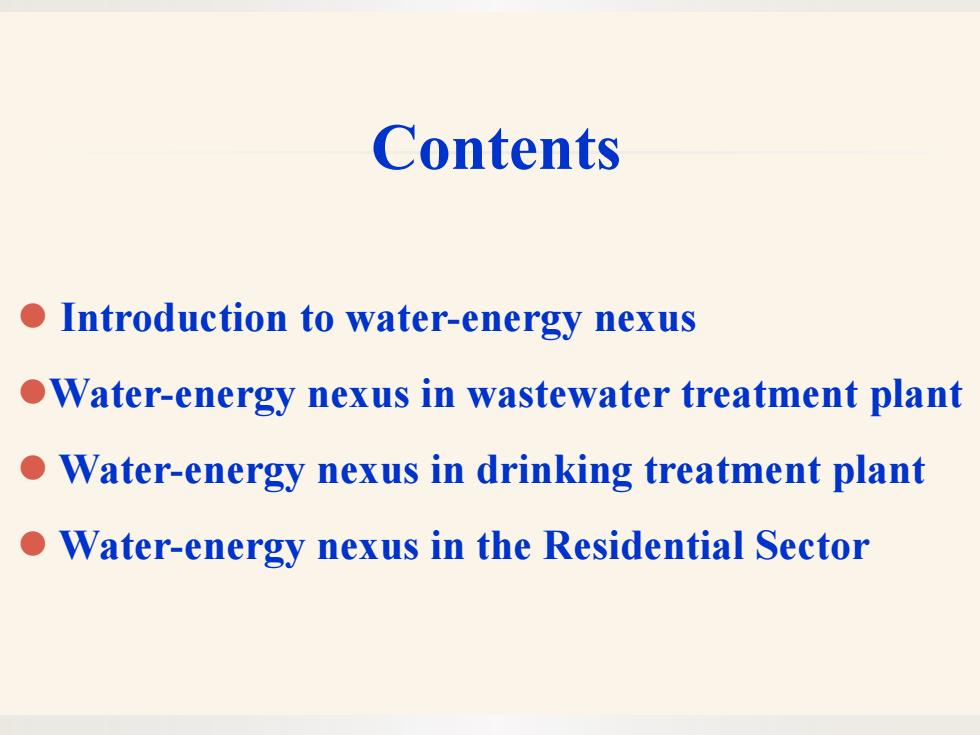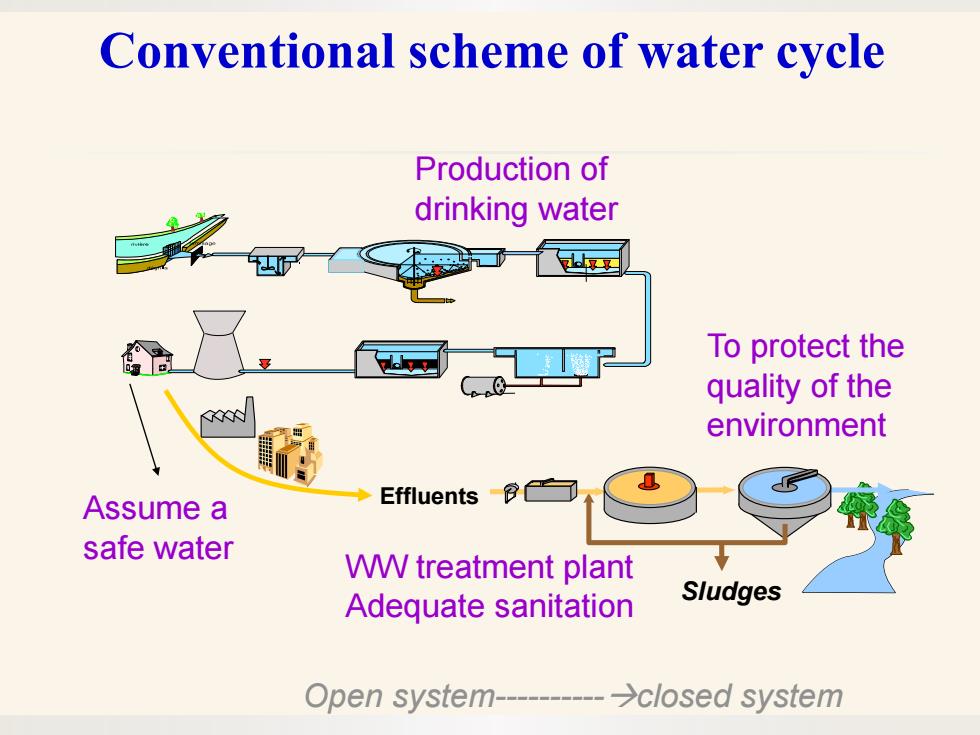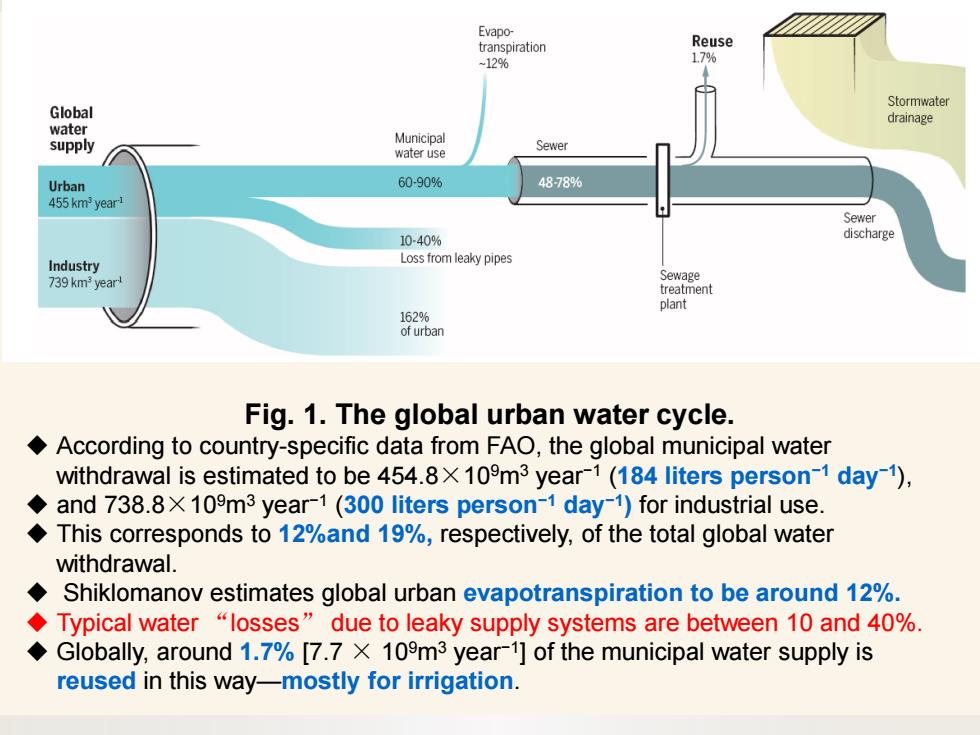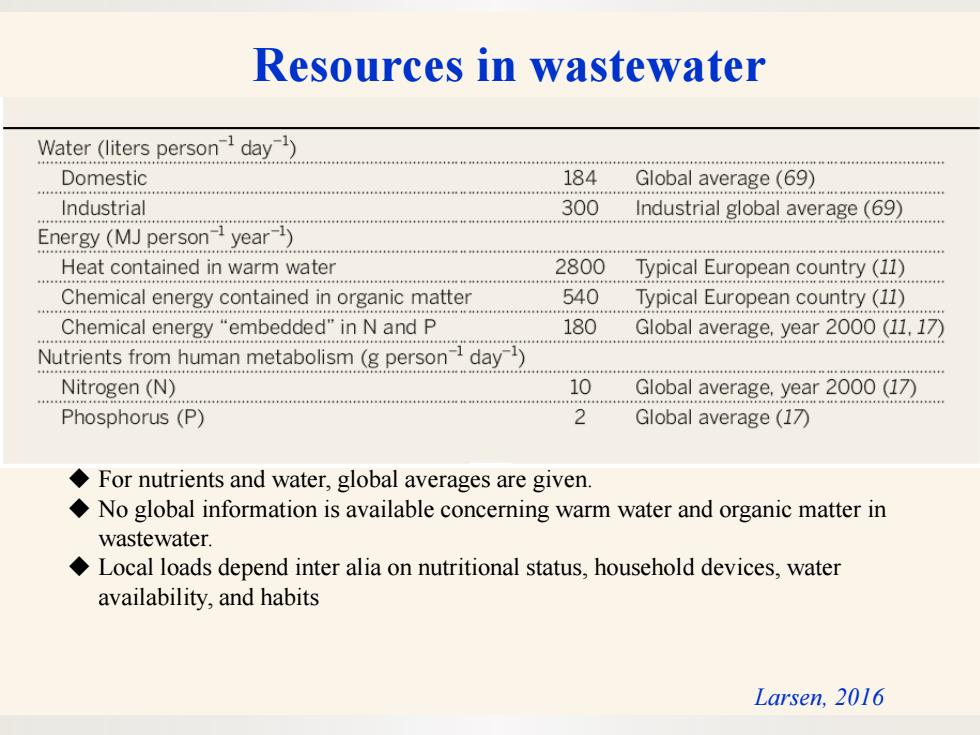
Contents oIntroduction to water-energy nexus Water-energy nexus in wastewater treatment plant Water-energy nexus in drinking treatment plant ●】 Water-energy nexus in the Residential Sector
Contents ⚫ Introduction to water-energy nexus ⚫Water-energy nexus in wastewater treatment plant ⚫ Water-energy nexus in drinking treatment plant ⚫ Water-energy nexus in the Residential Sector

Conventional scheme of water cycle Production of drinking water To protect the quality of the environment Assume a Effluents8与 safe water W treatment plant Adequate sanitation Sludges Open system---------->closed system
Conventional scheme of water cycle Sludges Effluents WW treatment plant Adequate sanitation Production of drinking water To protect the quality of the environment Assume a safe water Open system----------→closed system

Emerging solutions to the water challenges of an urbanizing Science world Tove A.Larsen,Sabine Hoffmann,Christoph Luithi,Bernhard Truffer and Max Maurer (May 19,2016) ATAAAS Science352(6288),928-933.[doi:10.1126/science.aad8641]

Evapo- transpiration Reuse -129% 17% Stormwater Global drainage water supply Municipal Sewer water use Urban 60-90% 4878% 455 km year Sewer 10-40% discharge Industry Loss from leaky pipes Sewage 739 km year treatment plant 162% of urban Fig.1.The global urban water cycle. According to country-specific data from FAO,the global municipal water withdrawal is estimated to be 454.8x 109m3 year-1(184 liters person-1 day-1), and 738.8X 109m3 year-1(300 liters person-1 day-1)for industrial use. This corresponds to 12%and 19%,respectively,of the total global water withdrawal. Shiklomanov estimates global urban evapotranspiration to be around 12%. Typical water "losses"due to leaky supply systems are between 10 and 40%. Globally,around 1.7%[7.7 X 109m3 year-1]of the municipal water supply is reused in this way-mostly for irrigation
Fig. 1. The global urban water cycle. ◆ According to country-specific data from FAO, the global municipal water withdrawal is estimated to be 454.8×109m3 year−1 (184 liters person−1 day−1), ◆ and 738.8×109m3 year−1 (300 liters person−1 day−1) for industrial use. ◆ This corresponds to 12%and 19%, respectively, of the total global water withdrawal. ◆ Shiklomanov estimates global urban evapotranspiration to be around 12%. ◆ Typical water “losses” due to leaky supply systems are between 10 and 40%. ◆ Globally, around 1.7% [7.7 × 109m3 year−1] of the municipal water supply is reused in this way—mostly for irrigation

Resources in wastewater Water (liters person1 day) Domestic 184 Global average(69) Industrial 300 Energy (M)personyear) Industrial global average(69) Heat contained in warm water 2800 Typical European country(11) Chemical energy contained in organic matter 540 Typical European country (11) Chemical energy"embedded"in N and P 180 Global average,year 2000(11,17) Nutrinfrom human metabolism personday1 Nitrogen(N) 10 Global average.year 2000(17) Phosphorus (P) 2 Global average(17) For nutrients and water,global averages are given. No global information is available concerning warm water and organic matter in wastewater. Local loads depend inter alia on nutritional status,household devices,water availability,and habits Larsen,2016
Larsen, 2016 Resources in wastewater ◆ For nutrients and water, global averages are given. ◆ No global information is available concerning warm water and organic matter in wastewater. ◆ Local loads depend inter alia on nutritional status, household devices, water availability, and habits